
In the Year of the Dragon, the dance of the dragon takes center stage. In the Lingnan region, there's a unique tradition where performers, while indulging in alcohol, casually sway with wooden dragon heads, and sometimes spray the liquor from their mouths. The spectacle of "dancing dragons, sprinkling alcohol" is the drunken dragon dance from Zhongshan, Guangdong.
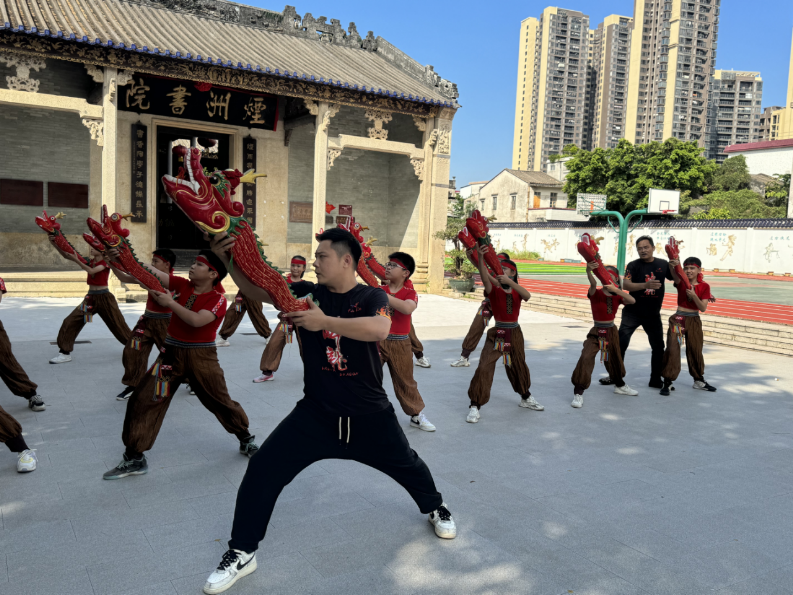
In Changzhou Village, the annual parade on the eighth day of the fourth lunar month has a long history. Villagers gather in temples to pay respects to deities, and after the rituals, the parade commences, involving the drunken dragon dance.
As far back as the Ming and Qing dynasties, the tradition of drunken dragon dance in Changzhou has been established. The performance is an essential part of the parade. Accompanied by the sounds of gongs and drums, performers dance and drink, and stop at altars to pay homage to the gods. The one holding the liquor vessel would step forward to pour liquor onto the dragon dancer. The dancers, though appearing drunken, maintain a steady rhythm and keep performing. After the parade, the aroma of alcohol lingers throughout the village's streets and alleys.
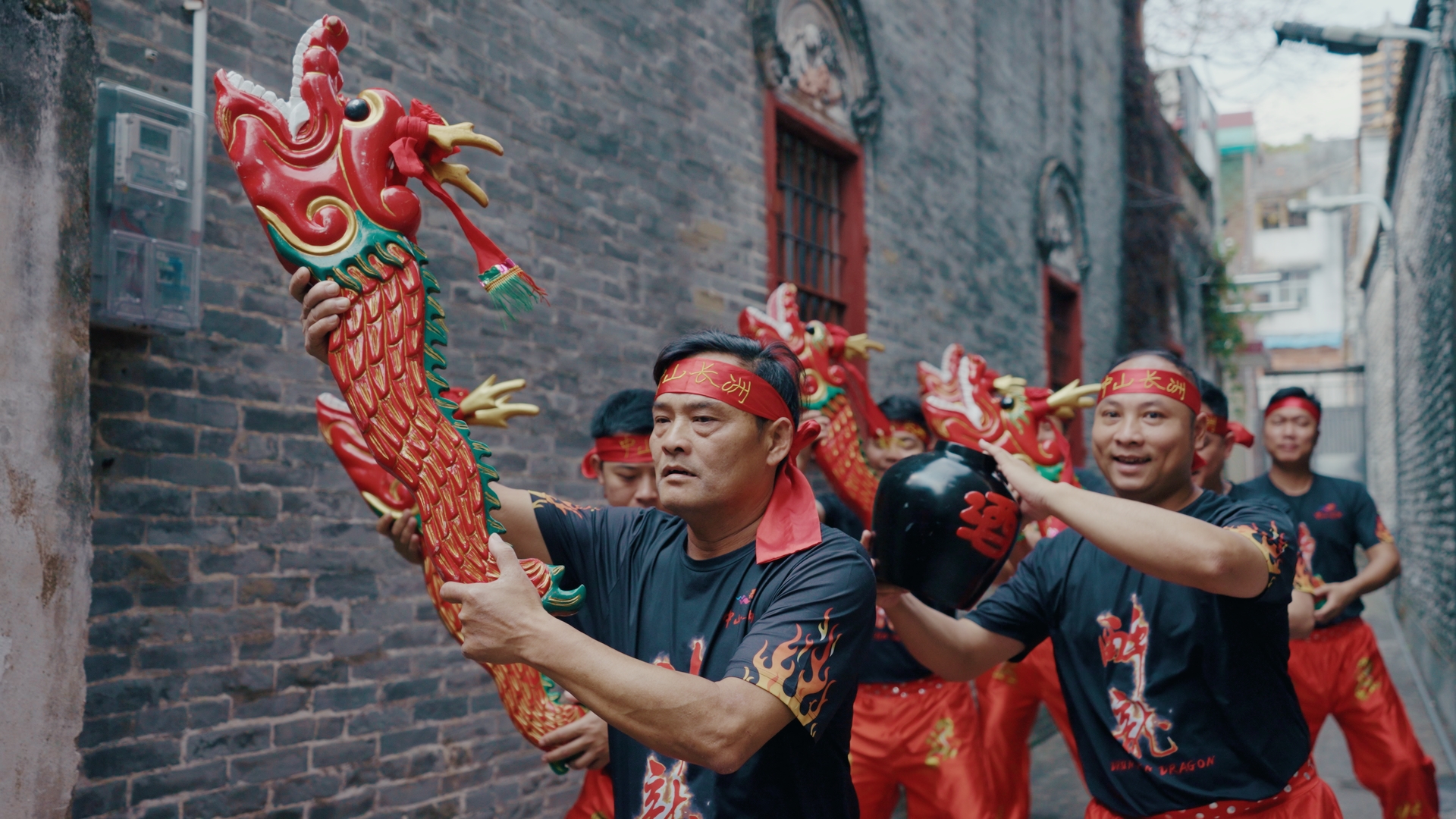
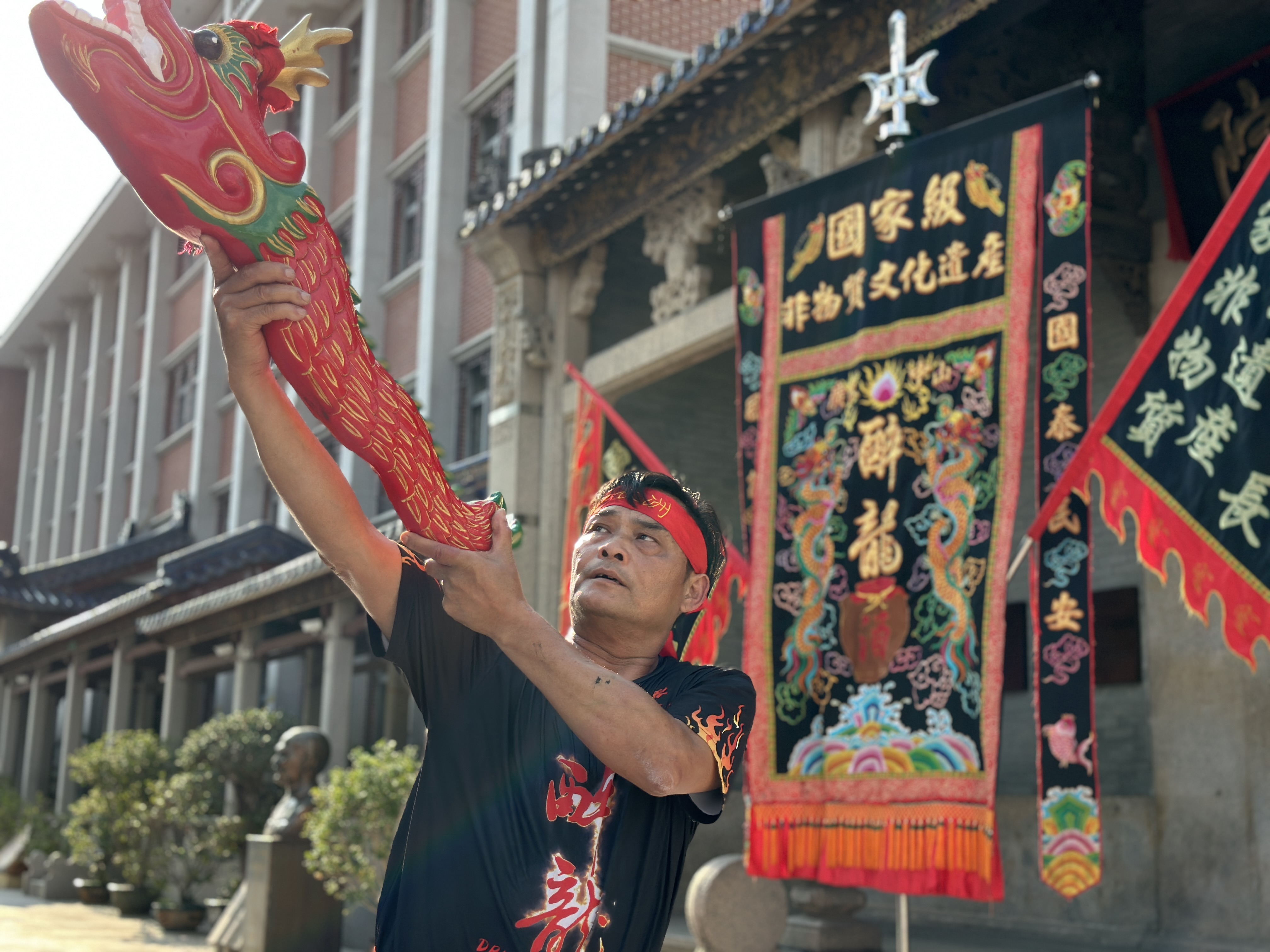
This year marks the 60th birthday of Huang Jinjian, a provincial representative inheritor of the drunken dragon dance. Having engaged in the tradition for half a century, he is the sixth-generation inheritor of the drunken dragon dance in Changzhou. During every performance, Huang Jinjian adorns a bright red headscarf and wields an 85-centimeter-long dragon head. His performance is agile and versatile, accompanied by spirited shouts of "hey" and "ha" as he dances.
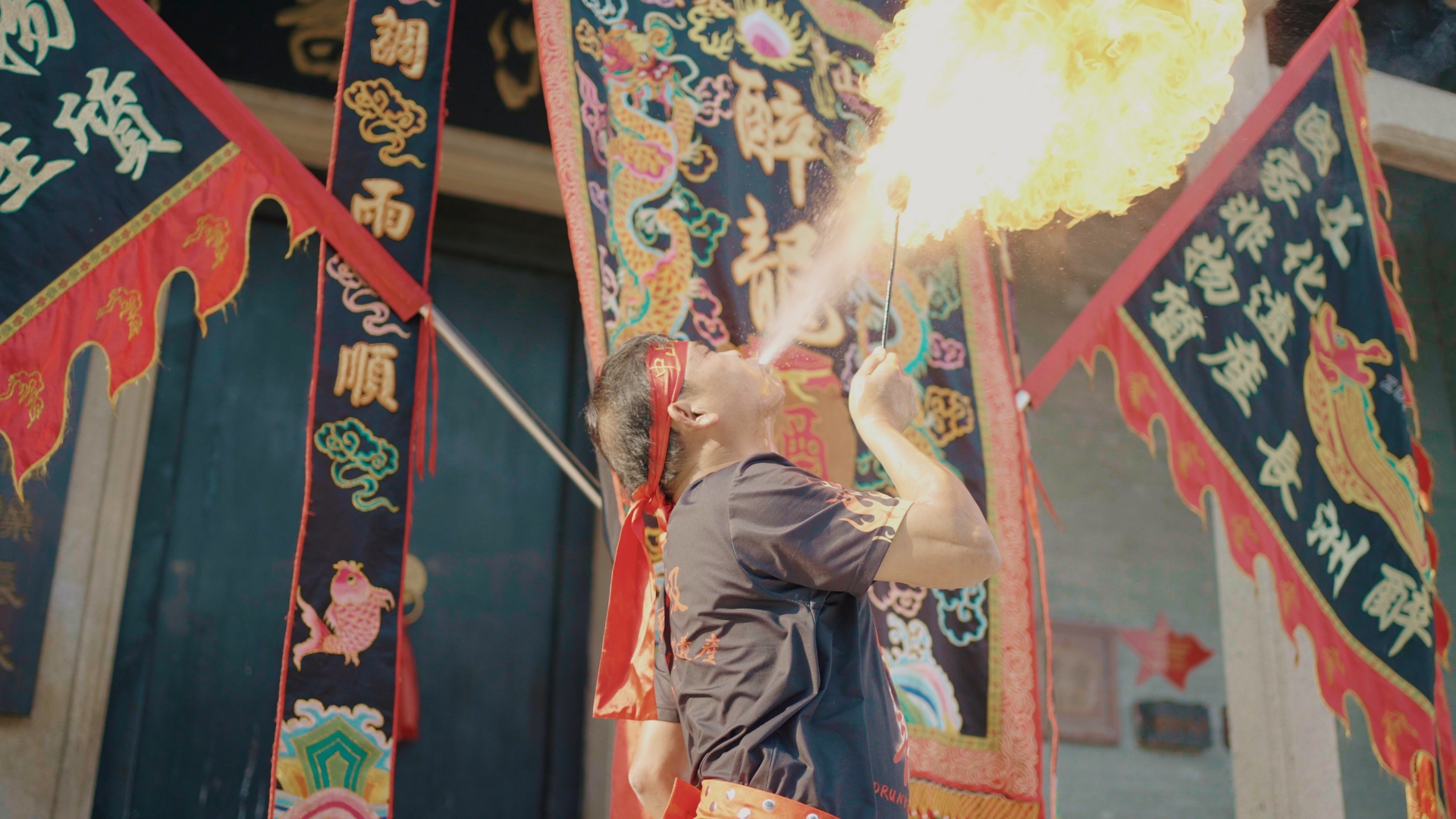
Huang Jinjian explained that the drunken dragon dance integrates techniques from Southern Fist, Drunken Fist, and acrobatics. Practitioners need a solid foundation in martial arts, requiring at least a year of basic training before learning the movements of the drunken dragon dance. Under Huang Jinjian's guidance, each member of the drunken dragon dance team possesses extraordinary skills. Their performance showcases impressive martial arts and dance abilities. During the performance, they wear black and red dance costumes, some holding dragon heads while others cradle wine jars, executing movements that appear intoxicated yet powerful. Due to years of dedicated practice, some members of the team are over fifty years old but still maintain robust physiques.
Near the Huang Clan Ancestral Hall is Yanzhou Elementary School, one of the campuses for passing down the drunken dragon dance tradition. Its predecessor, Yanzhou Academy, was established in 1873. Within this historic school, Huang Jinjian has set up a "Drunken Dragon Dance Inheritance Class for Juniors." On weekends, dozens of youths clad in black and red performance attire wield wooden dragons and dance the drunken dragon dance in front of this century-old academy.
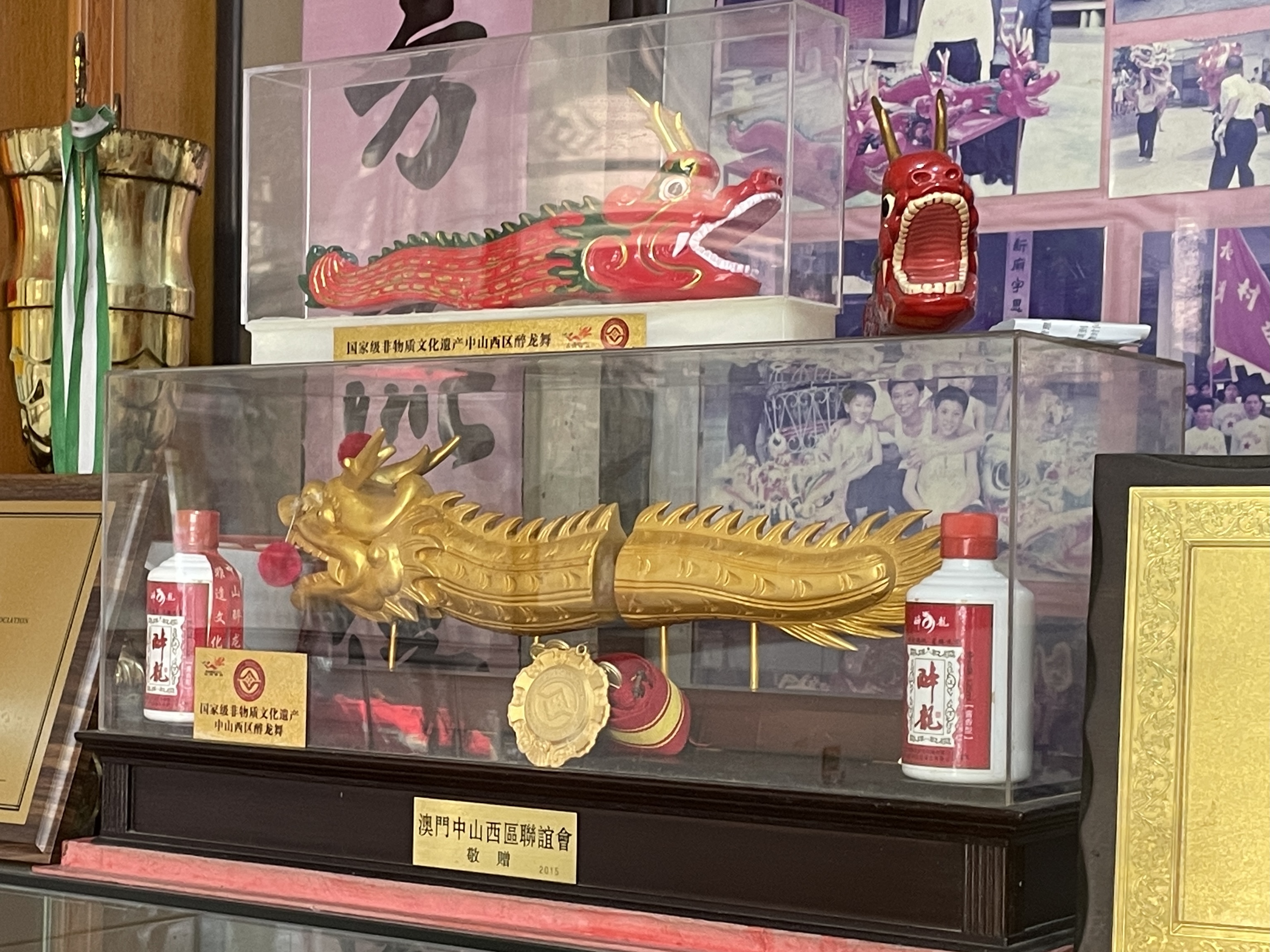
Apart from the class, Huang Jinjian also runs a herbal tea shop, which, through four generations, has become a well-known local landmark. Inside the shop is a display of gilded dragon heads and tails, quite eye-catching. These were gifts from the Macao-Zhongshan Western District Associationto the Changzhou Drunken Dragon Dance Team in 2015. Huang Jinjian mentioned that Macao also has its own drunken dragon dance, originating from the same roots as the Zhongshan version. He explained that Macao was originally part of Xiangshan County, Guangdong Province. In the 19th century, many people from Xiangshan County moved to Macao to engage in fishing and fish trading, bringing the folk custom to Macao. Every eighth day of the fourth lunar month, fishmongers take to the streets of Macao to perform the drunken dragon dance, expressing their nostalgia for their hometown. Subsequently, the Macao fishmongersbegan hosting the "Festival of the Drunken Dragon" annually. Today, this festival is not only a celebration for fishmongers but also a carnival for residents and tourists alike.
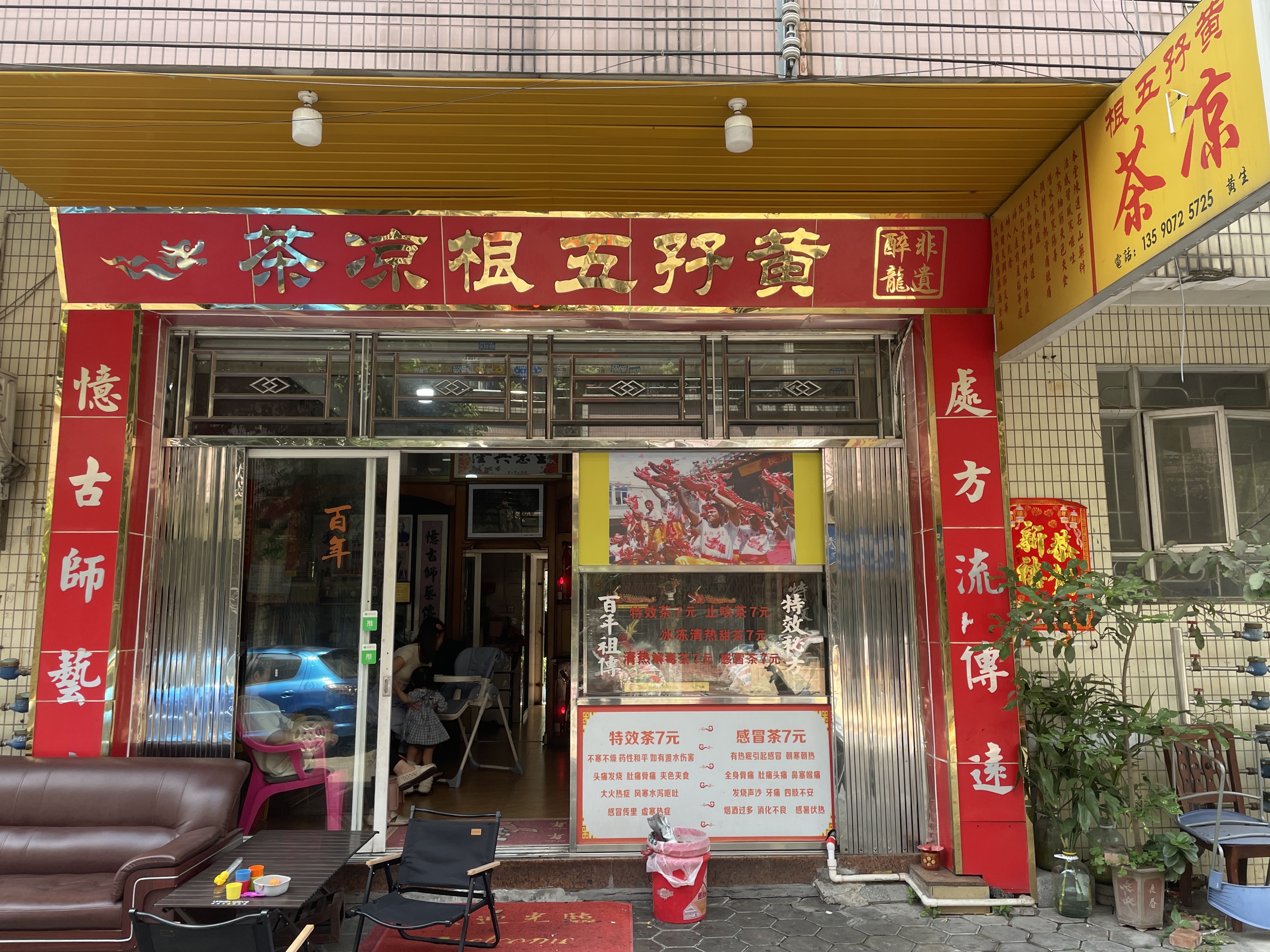
Source:Yangcheng Evening News
醉龙舞省级大师黄金渐:游龙醉步舞蹁跹|走进名家工作室
龙年看龙舞。在岭南有这样一种龙独具特色:舞龙者一边饮酒,一边随意舞动着木质龙头,时而将口中的酒喷出,表演“醉龙喷火”,呈现出“一路舞龙,一路洒酒”的奇观。这就是来自广东中山的醉龙舞。
在长洲村,每年农历四月初八的巡游仪式由来已久。长洲村民齐聚庙堂、礼佛拜神,祭祀后便是巡游活动,其中就有醉龙舞。
早在明清时期,长洲人舞醉龙便已成习俗。一到巡游时,队伍中总能看到舞醉龙者。伴随着锣鼓声,他们边舞龙边喝酒,但凡舞到社稷坛或土地公坛前,就停下来拜祭一番,持酒埕者会上前以酒灌舞龙者,舞龙者则“形醉意不醉,步醉心不醉”,大跳醉龙舞。一场巡游结束,村中巷道四处都会飘溢着酒香。
醉龙舞省级代表性传承人黄金渐今年60岁,已经与醉龙结缘了半个世纪,他是长洲醉龙舞的第六代传人。每次表演,黄金渐都会系上鲜红的头巾,端起85厘米长的龙头。他舞起醉龙来灵活自如、形神兼备,一边舞一边还伴随着中气十足的“嘿哈”呐喊。
黄金渐介绍道,醉龙舞融南拳、醉拳、杂耍等技艺于一体,练习者需要有较深厚的武术功底,至少练习基本功一年以后,才可以学习醉龙舞招式。黄金渐带领下的醉龙队成员个个身怀绝技,一套完整的醉龙舞演绎下来,都展现出不俗的武术和舞蹈功底。在表演中,他们身穿黑红色舞服,有的手捧龙头,有的怀抱酒坛,动作似醉非醉、孔武有力。因多年坚持练习,有的队员年纪已过半百,却依旧保持着强壮体格。
距离黄氏大宗祠不远处的烟洲小学就是醉龙舞校园传承基地之一,其前身是烟洲书院,创办于1873年。黄金渐在这座历史悠久的学校内开设了“小醉龙传承班”,每到周末,在这座百年书院前,便有数十位少年身着黑红色表演服、手持木龙,一招一式舞起醉龙舞。
黄金渐还经营着一家凉茶铺,历经四代传承,已成为当地街坊耳熟能详的“地标”。凉茶铺里陈列着一组镀金龙头、龙尾,颇为醒目。这是由澳门中山西区联谊会于2015年赠予中山长洲醉龙队的礼物。黄金渐说,澳门也有醉龙舞,与中山醉龙舞同根同源。他说,澳门原属广东省香山县,19世纪后不少香山县人移居澳门,从事渔业和鱼类买卖,便将舞醉龙的民间习俗带到了澳门。鱼行行友们每年四月初八都会上街舞一番醉龙,以表思乡之情。后来,澳门鲜鱼行总会便每年举行“鱼行醉龙节”。如今这不仅是鱼行人的盛会,也逐渐成为市民和游客的狂欢。
文|记者 周欣怡
图| 彭灏明 彭泽祥 唐德荣 林丹丹 戚容源 陈贤宇 暨晴(除署名外)
出品人:杜传贵 林海利
策划:孙爱群 陈桥生
监制:邓琼 蒋铮 吴小攀
统筹:朱绍杰 何奔
执行:周欣怡 彭灏明 文艺 黄宙辉 孙磊
海报设计:唐欣怡
-
China's first deep sea multi-functional scientific research and archaeological vessel launched at Nansha, Guangzhou
2024-04-21 19:36:16 -
30 diplomatic missions in Guangzhou visited Panyu
2024-04-20 23:09:19 -
The first phase of the 135th Canton Fair concludes with a flourishing order and popularity!
2024-04-20 23:29:27 -
Guangzhou Tianhe District creates a hub for fusion of eastern and western cuisine
2024-04-20 23:43:30






